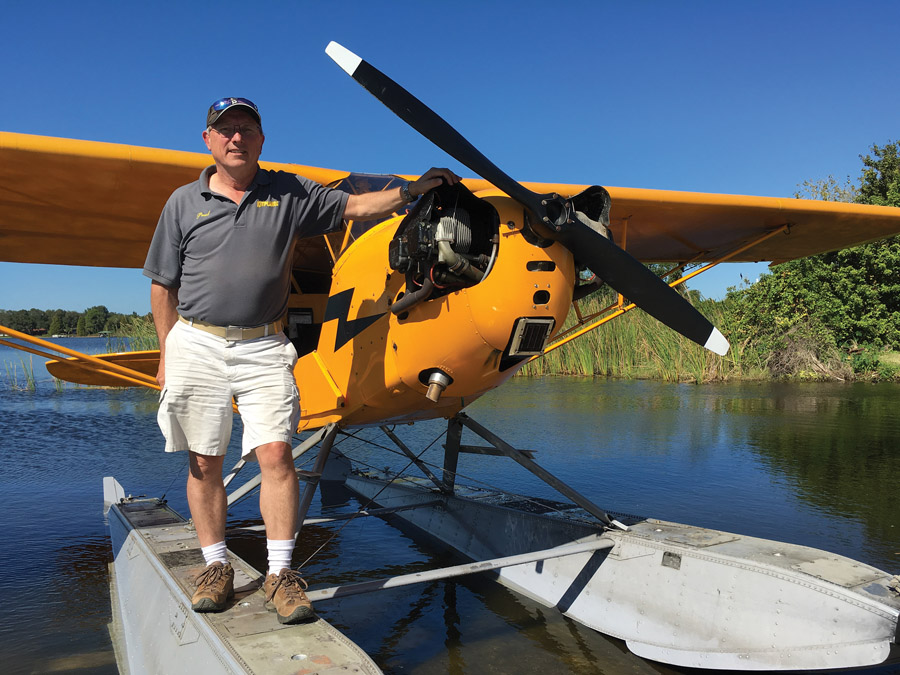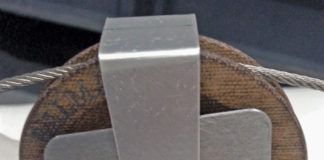I think my last formal flight review (the one you have to fly every two years with a CFI) was probably over two decades ago. Yet, amazingly, I am fully current and legal to fly as PIC anytime I want! How can that be? Isn’t a biennial flight review (BFR) required? Well, yes, of course it is. But you can satisfy the requirements for a flight review in a couple of different ways—and I found that the most interesting way is to do some continuing education—otherwise known as adding ratings.

You can get a seaplane rating in two days at Jack Brown’s in Florida—a great way to add a new skill and keep yourself learning.
Now the truth is, most pilots who fly for their own satisfaction and enjoyment don’t need additional ratings. A private license with Airplane, Single Engine, Land is sufficient to fly what the vast majority of Experimental aviation pilots choose to use to leave the ground. But there is a benefit in achieving additional ratings that exceed simply having what you need; it satisfies what I would argue is a need for continuing education.
The flight review came into being because of the need for pilots to review and hopefully learn a little more after passing their check ride. In the old days, there was no such thing. A pilot could earn their license, and so long as they made three takeoffs and landings (to a full stop if in a taildragger) within 90 days of carrying passengers, they were good to go—even if their last flight was a decade or more previous. That caught the attention of people who study accidents and incidents, and the FAA felt that the interests of safety were better served if they made sure that pilots were at least exposed to a basic review once every two years.
I earned my first license back in the 1970s, before we had the various classes of airspace (although we did have TCAs), before we had METARS (we had sequence reports instead), and before you needed specific endorsements to operate high-performance, complex, or taildragger airplanes. If I hadn’t been concerned about continuing education, I’d have sailed merrily through airspace I didn’t understand, not knowing the weather, and never having anyone sign me off as competent to fly any of the four conventional-gear airplanes that live in my hangar. Well, OK—I am grandfathered on all of those endorsements, so I don’t actually need the signatures, as I did have the training. The point is, the aviation world changes, and we need to keep ourselves up to date in order to stay with it.
Continuing education is more than just the law—it’s a darn good idea as well. It keeps us limber mentally, and it brushes us up on skills that we might let atrophy. For instance, for a recent rating, I needed to demonstrate my ability to fly instrument approaches in a twin with one engine inoperative. The trouble was, the airplane we were using only had a basic six-pack, no autopilot, and basic avionics. I hadn’t flown that way for years, despite the fact that I trained for my instrument rating that way back in the dark ages. Brushing up my scan and getting sharp flying with raw needles is not something that I will use in my everyday flying, but it sure did knock the rust off and restore some depth to my instrument skills. Modern avionics and displays just make it too easy.
Now many pilots practice their skills a lot; they go up routinely and shoot touch and goes, turns about a point, and even stalls. They do these things weekend after weekend and are confident that they are staying sharp. But the truth is, when we fly with ourselves all the time, we have no outside critique, no one to point out that we have gotten sloppy with the rudder in the stall, or are flying ten knots too fast down final. Even if you routinely fly with a friend, trading off stick time and watching each other fly, you are still dealing with a situation where common mistakes can go unnoticed. I am not shilling for the CFI world when I say that instructors are trained to be critical—and more than that, to recommend fixes and techniques to make you a better pilot.
Chasing ratings is one way to keep yourself sharp, and it is a lot of fun going after new experiences like flying on floats or soaring without a motor. Adding an endorsement for a complex aircraft or one of them old-fashioned taildraggers doesn’t increase the number of lines on your license, but the experience is just as valuable. Getting a new rating is a great accomplishment, but you can get the same feeling for less money just transitioning into a new type of aircraft. It’s all good—and all valuable.
What’s important in the end is that we never stop learning. Aviation is vast, and the opportunities to learn enormous. The learning pays off in enhanced safety—but just as important, in enhanced fun. And for those of you with ongoing build projects, remember that if you really want to fly your own Phase 1, you owe it to yourself—and your airplane—to be as sharp as possible when the day comes for you to slip the surly bonds and leave the planet for the first time in a new craft. Getting some quality instruction will pay benefits in safety, lower insurance rates, and the satisfaction that you are doing your best as a pilot.
So what new thing will you learn about in the next month? The next year? Go and explore—there is a world of experience waiting to educate you.

![]()
Paul Dye, Kitplanes Editor in Chief, retired as a Lead Flight Director for NASA’s Human Space Flight program, with 40 years of aerospace experience on everything from Cubs to the space shuttle. An avid homebuilder, he began flying and working on airplanes as a teen, and has experience with a wide range of construction techniques and materials. He flies an RV-8 that he built, an RV-3 that he built with his pilot wife, as well as a Dream Tundra they completed. Currently, they are building a Xenos motorglider. A commercially licensed pilot, he has logged over 5000 hours in many different types of aircraft and is an A&P, EAA Tech Counselor, and Flight Advisor, as well as a member of the Homebuilder’s Council. He consults and collaborates in aerospace operations and flight-testing projects across the country.





